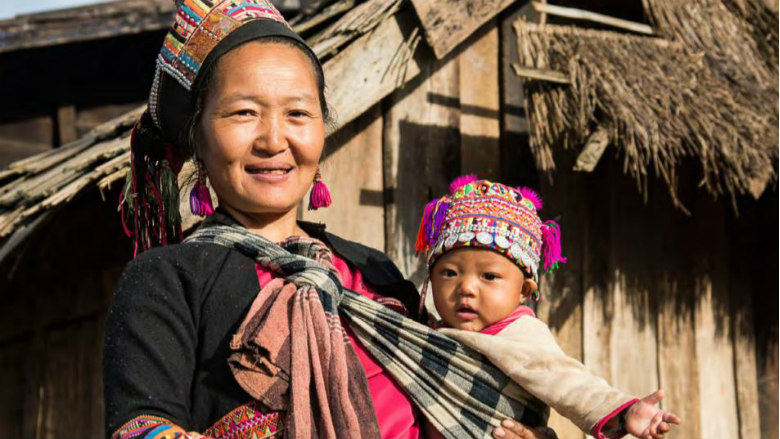Lao PDR is undergoing rapid transition in its demography, epidemiology and health financing.
- With its robust economic growth in the past decade, Lao PDR prepares to graduate from Least Developed Country (LDC) status by 2020 to become an upper-middle-income country by 2030.
- Strong economic growth has been accompanied by a significant decline in poverty rates. The national poverty rate declined from 33.5% in 2002 to 23.2% in 2012.
- Despite progress on the national front, not all population groups are benefiting from improvements in healthcare.
- Child mortality and stunting rates are 4-5 times higher in some provinces. This especially affects residents in rural areas without road access.
- The disease burden from non-communicable diseases has surpassed that of communicable diseases.
- Child malnutrition remains a significant problem, with 44% stunting rates among children under 5 in 2011.
- At the same time, Lao PDR expects to face declining funding from external sources and will need to increase domestic financing for health.
- The country has made the attainment of Universal Health Coverage (UHC) by 2025 an explicit public policy goal; financing UHC in a fiscally sustainable manner will be challenging in the context of donor transitions.
Despite the recent increase in public financing for health, historically, health financing in Lao PDR is characterized by low and erratic levels of government spending on health and reliance on both out-of-pocket health expenditure and development assistance.
- The composition of health expenditures has changed over the 15-year period, although out-of-pocket spending has remained the largest source.
- Out-of-pocket spending is the largest source of health financing, with 45.1% of health spending financed by households in 2016.
- High levels of out-of-pocket spending deter the poor from using health services, or push the poor or near poor further into poverty due to costs of healthcare.
- Lao PDR has substantial dependence on external finance–particularly for priority health programs that include Tuberculosis, Malaria, and immunization programs.
- Despite the recent increase, health’s share of the national budget is 6%, which is low compared to other countries in the region.
- The level of dependency of health spending from external sources is higher than expected for the income level of Lao PDR.
To move towards Universal Health Coverage, Lao PDR will need to increase the government spending for health, particularly from domestic revenue sources and decrease reliance on out-of-pocket spending.
- This will require expansion of well-managed social health protection schemes covering those informal workers that are previously left out from programs; and
- Increase government health spending to reduce the financial burden on households and vulnerability.
To ensure sustainability, it is essential to increase efficiency and effectiveness of health spending. This may be achieved by:
- Improving financial management and expenditure tracking systems at all levels, including health centers.
- Evidence-based priority setting to identify where limited resources should be invested.
- Devising innovations to cut costs.
- Responding to the changing burden of disease—both the increasing impacts of non-communicable diseases and remaining challenges of communicable diseases and malnutrition.
Planning and gradual integration will be required to transition from external financing to domestically-financed Universal Health Coverage.
- Parallel functions from externally-financed programs will need to be integrated.
- The Essential Service Package for Universal Health Coverage must be costed to align it with available resources and to predict upcoming financing requirements.
- Health management information systems should be integrated and used for monitoring, planning and policy decisions.
- Other priorities will include streamlining delivery of services and strengthening service capacity.
- The Essential Service Package for Universal Health Coverage should include services both at facilities and in communities to reach all population groups.
